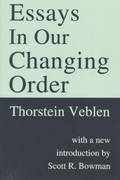Question
16. A consumer is in equilibrium when: A) an equal amount is spent on every commodity. B) the same total utility is derived from each
16.
A consumer is in equilibrium when:
A)
an equal amount is spent on every commodity.
B)
the same total utility is derived from each commodity.
C)
the addition to total utility per dollar is the same for every commodity.
D)
marginal utilities are equal.
17.
Which goal BEST explains why entrepreneurs seek to meet a market need?
A)
earn a profit
B)
show altruism
C)
meet a legal requirement
D)
fulfill a vow
18.
Suppose that Bob leaves a job that pays $50,000 per year in order to open a new sponge business. His insurance cost is $5,000, his material cost is $25,000, his lease payments are $10,000, and his sales revenue is $90,000. Bob's economic profit is:
A)
$50,000.
B)
$90,000.
C)
$40,000.
D)
$0.
19.
To pursue a goal of being a business owner, Mary left a job that paid $40,000 per year. At the end of her first year in business, her cash revenues summed up to $90,000 and her explicit costs were $50,000. Also, in order to fund her business startup, Mary cashed in a $20,000 certificate of deposit that was providing a yield of 5%.Ceteris paribus, Mary's economic profit is:
A)
$40,000.
B)
$1,000.
C)
-$1,000.
D)
$0.
20.
Wendy leaves her job as a dancer to start her own dance studio. As a dancer, she made $34,000 per year. During the first year she paid $4,300 per year for insurance, $1,846 for music and licensing fees, $150 for a boom box, and $11,300 for rent and utilities. She received $60,480 in tuition payments. Wendy's economic profit was:
A)
$8,884.
B)
$42,884.
C)
$51,596.
D)
$60,480.
Step by Step Solution
There are 3 Steps involved in it
Step: 1

Get Instant Access to Expert-Tailored Solutions
See step-by-step solutions with expert insights and AI powered tools for academic success
Step: 2

Step: 3

Ace Your Homework with AI
Get the answers you need in no time with our AI-driven, step-by-step assistance
Get Started


